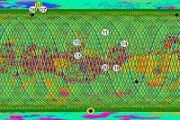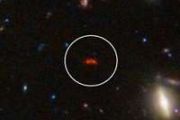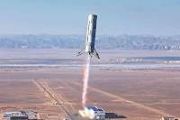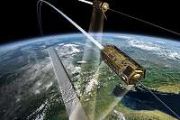
Copernical Team
Initial curation of NASA's OSIRIS-REx sample delayed
 The initial curation process for NASA's OSIRIS-REx sample of asteroid Bennu is moving slower than anticipated, but for the best reason: the sample runneth over. The abundance of material found when the science canister lid was removed earlier this week has meant that the process of disassembling the TAGSAM (Touch-and-Go Sample Acquisition Mechanism) head - which holds the bulk of material from t
The initial curation process for NASA's OSIRIS-REx sample of asteroid Bennu is moving slower than anticipated, but for the best reason: the sample runneth over. The abundance of material found when the science canister lid was removed earlier this week has meant that the process of disassembling the TAGSAM (Touch-and-Go Sample Acquisition Mechanism) head - which holds the bulk of material from t Law professor calls for ethical approach to human experiments in space
 University of Mississippi law professor Michelle Hanlon co-authored an article published (Sept. 28) in the journal Science that offers best practices for human research in space.
Each time astronauts venture into space provides researchers with data on how the human body reacts to long-term exposure to zero gravity and other facets of space life. As the race to build communities, tourism a
University of Mississippi law professor Michelle Hanlon co-authored an article published (Sept. 28) in the journal Science that offers best practices for human research in space.
Each time astronauts venture into space provides researchers with data on how the human body reacts to long-term exposure to zero gravity and other facets of space life. As the race to build communities, tourism a Global team recommends ethical rules for human research in commercial spaceflight
 The first ethical framework for conducting human research on commercial spaceflight was proposed in an article in Science by an international team that included Hastings Center president Vardit Ravitsky. Ravitsky's contribution focused on promoting diversity among the researchers and participants, which is essential to ensuring the research benefits society at large.
Human research on comm
The first ethical framework for conducting human research on commercial spaceflight was proposed in an article in Science by an international team that included Hastings Center president Vardit Ravitsky. Ravitsky's contribution focused on promoting diversity among the researchers and participants, which is essential to ensuring the research benefits society at large.
Human research on comm GITAI passes all NASA safety reviews for ISS external demonstration
 GITAI USA Inc. and GITAI Japan Inc. (GITAI), the world's leading space robotics startup, successfully completed all NASA safety reviews required for the ISS external demonstration. Furthermore, GITAI handed over the GITAI robotic flight model to NASA in August 2023 and is now ready for launch. The GITAI robotic flight model is scheduled to journey to the ISS for its deployment in early 2024. Ple
GITAI USA Inc. and GITAI Japan Inc. (GITAI), the world's leading space robotics startup, successfully completed all NASA safety reviews required for the ISS external demonstration. Furthermore, GITAI handed over the GITAI robotic flight model to NASA in August 2023 and is now ready for launch. The GITAI robotic flight model is scheduled to journey to the ISS for its deployment in early 2024. Ple Ethical guidelines needed before human research in commercial spaceflight is ready for liftoff
 A global, multidisciplinary team of bioethicists, health policy experts, commercial spaceflight professionals and space health researchers, including Rachael Seidler from the University of Florida, has developed guiding principles and best practices to help ensure human research conducted in space is safe and inclusive.
The proposed ethical guidelines were released Friday in a policy paper
A global, multidisciplinary team of bioethicists, health policy experts, commercial spaceflight professionals and space health researchers, including Rachael Seidler from the University of Florida, has developed guiding principles and best practices to help ensure human research conducted in space is safe and inclusive.
The proposed ethical guidelines were released Friday in a policy paper Maritime Launch unveils commercial suborbital program at Spaceport Nova Scotia
 Maritime Launch Services Inc. (NEO: MAXQ; OTCQB: MAXQF) unveiled its suborbital launch program currently scheduled to begin during the second quarter of 2024.
Maritime Launch's suborbital program called Dedicated Altitude Research and Testing (DART), is a program designed to offer flight opportunities to researchers across a wide range of mission capabilities, ranging from building and tes
Maritime Launch Services Inc. (NEO: MAXQ; OTCQB: MAXQF) unveiled its suborbital launch program currently scheduled to begin during the second quarter of 2024.
Maritime Launch's suborbital program called Dedicated Altitude Research and Testing (DART), is a program designed to offer flight opportunities to researchers across a wide range of mission capabilities, ranging from building and tes Scientists observe the influence of gravity on antimatter for the first time
 Scientists have demonstrated the existence of gravity between antimatter and Earth, reaffirming Albert Einstein's General Theory of Relativity.
It is thought that Isaac Newton's historic work on gravity was inspired by watching an apple fall to Earth from a tree. But for decades, scientists have wondered what would happen to an "anti-apple" made of antimatter - would it fall in the same wa
Scientists have demonstrated the existence of gravity between antimatter and Earth, reaffirming Albert Einstein's General Theory of Relativity.
It is thought that Isaac Newton's historic work on gravity was inspired by watching an apple fall to Earth from a tree. But for decades, scientists have wondered what would happen to an "anti-apple" made of antimatter - would it fall in the same wa Eutelsat and OneWeb combination world's first GEO-LEO Operator
 Eutelsat Communications SA (Euronext Paris: ETL) has announced the completion of its all-share combination with OneWeb, the global low Earth orbit (LEO) satellite communications network, following the approval at the Ordinary and Extraordinary General Meeting of Eutelsat shareholders. This combination forms Eutelsat Group.
The Company remains headquartered in Paris. OneWeb will be a subsid
Eutelsat Communications SA (Euronext Paris: ETL) has announced the completion of its all-share combination with OneWeb, the global low Earth orbit (LEO) satellite communications network, following the approval at the Ordinary and Extraordinary General Meeting of Eutelsat shareholders. This combination forms Eutelsat Group.
The Company remains headquartered in Paris. OneWeb will be a subsid China's solar telescope array officially completed
 The Daocheng Solar Radio Telescope, a solar telescope array in southwest China, passed key testing on Wednesday, marking the official completion of the world's largest synthesis aperture radio telescope, according to the Chinese Academy of Sciences (CAS).
The CAS said that the telescope array is a landmark equipment of the country's space environment ground-base comprehensive monitoring ne
The Daocheng Solar Radio Telescope, a solar telescope array in southwest China, passed key testing on Wednesday, marking the official completion of the world's largest synthesis aperture radio telescope, according to the Chinese Academy of Sciences (CAS).
The CAS said that the telescope array is a landmark equipment of the country's space environment ground-base comprehensive monitoring ne Your Interactive Guide to the 2023 Annular Solar Eclipse
 Have you ever wondered how to track an eclipse down to the exact second? NASA has you covered! As the countdown to the highly anticipated Oct. 14, 2023, annular solar eclipse continues, NASA is proud to unveil the Eclipse Explorer - an interactive map designed to enhance your eclipse-viewing experience. Crafted to complement our existing static eclipse maps, this tool enables users to dive into
Have you ever wondered how to track an eclipse down to the exact second? NASA has you covered! As the countdown to the highly anticipated Oct. 14, 2023, annular solar eclipse continues, NASA is proud to unveil the Eclipse Explorer - an interactive map designed to enhance your eclipse-viewing experience. Crafted to complement our existing static eclipse maps, this tool enables users to dive into 


























